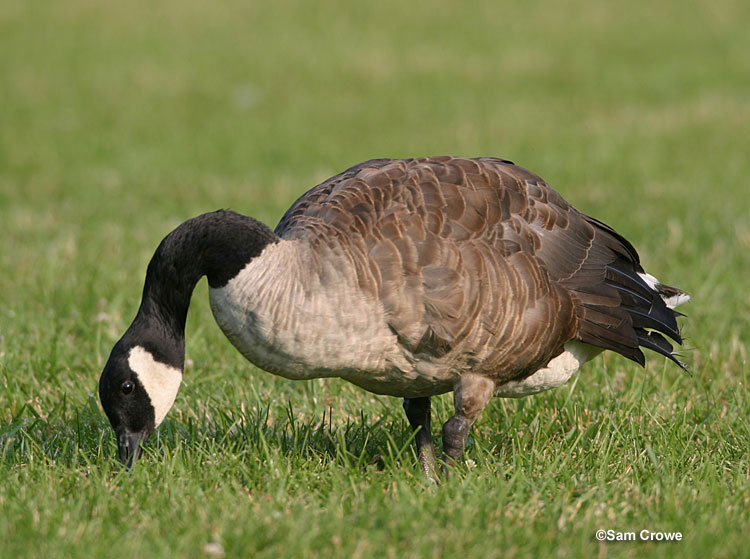Canada Goose (Branta canadensis) is a common, large, gray-brown waterfowl species with its trademark long black neck and brownish body.
This large goose is easy to see in parks, golf courses, wetlands, and other open grassy habitats with water features.
Want to learn more about the Canada Goose? See this article to learn all about this common and conspicuous bird species!
On this page
Identification
Male
The male Canada Goose is a big waterfowl species with gray-brown plumage, white undertail and lower belly, and long black neck. They also have a black head with white on their throat and the back side of their face.
These big birds have a duck-like black beak, are usually paler on their chest, and also have pale edging to the feathers on their underparts, back, and wings.
Canada Geese have longish, black legs and feet, and a short, broad, black and white tail. In flight, we can recognize them by their long black neck, white throat, and plain, big, broad wings.
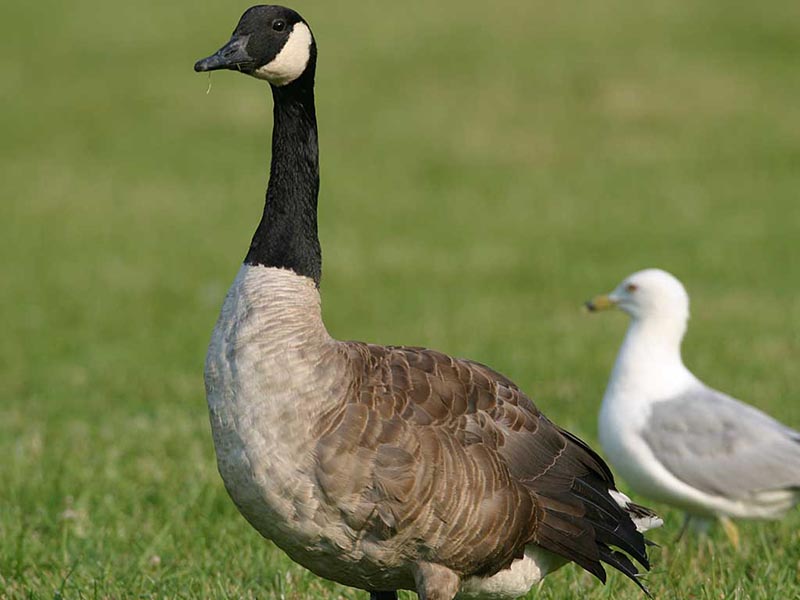
Female
The female Canada Goose looks just like the male but is slightly smaller. The differences between the sexes are impossible to tell in the field, but studies have shown that males weigh a little bit more.
Some subspecies of Canada Geese are bigger than others. Taking all subspecies into account, on average, they are 36 to 45 inches long, have wingspans from 53 to 60 inches long, and weigh 6 to 9.8 pounds.
In coastal Alaska and parts of the Pacific Northwest, the Canada Goose has much darker brown plumage. These birds are known as the “Dusky Canada Goose”.
Vocalizations
Canada Geese can be vocal and very loud birds. The Canada Goose call can carry for a long way and let you know when these birds are in the area. Mostly, they make barking or honking sounds, both when perched and in flight.
Near their nests, Canada Geese also make sharp, hissing calls. They can hiss when sitting on the nest but also make this menacing Canada Goose sound when chasing intruders away, people included!
Food
The Canada Goose feeds on a variety of plant matter. Their diet varies according to where they live and the time of year but always includes items like grains, grass, and other types of vegetation.
Related: Do geese have teeth?
In spring and summer, when the grass is fresh and green, Canada Geese mostly feed on sedges, new grass, and other quickly growing vegetation. They forage for this type of food by walking on lawns and other similar, open grassy areas and using their beak to nibble and graze.
In late summer, fall, and winter, Canada Geese switch their diet to one that includes a lot more carbohydrates. Instead of grazing grass, they tend to feed more on grains, rhizomes, berries, leaves, and seeds.
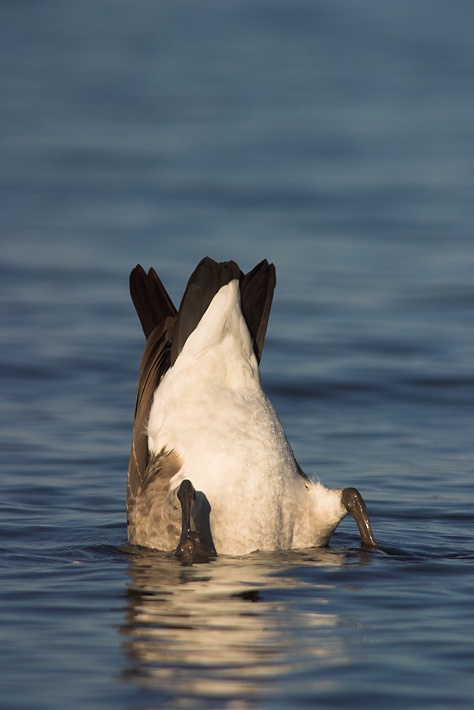
The geese eat these food items by dipping their heads below the surface of the water and picking tubers from the bottom of shallow wetlands, visiting farm fields, and browsing low bushes. They mostly pick up corn and all sorts of other grains and seeds from the ground and pick berries and leaves from low vegetation.
No matter what they are feeding on, Canada Geese forage in flocks. During migration and winter, some of those flocks can number in the thousands.
Nesting and Eggs
Canada Geese form pairs well before they return to their breeding grounds. Depending on where they spend the summer, they can start nesting anywhere from March to June.
Although both parents check out potential nest sites, the female goose picks the place where she wants to lay her eggs. During that process, she might check several spots and test them by preparing them for nesting.
Related: What do geese symbolize?
After settling on the best spot, she usually makes a scrape on the ground and pulls nearby vegetation close to make a shallow cup nest.
This species can nest on islands, at the edges of ponds, on muskrat and beaver lodges, and even on rooftops and other structures.
No matter where the Canada Goose nest site is, it is always in a dry and elevated spot with a good view of the surrounding area. After laying two to eight, creamy-white eggs that are 3.3 inches long and weigh 5.6 ounces each, the female goose incubates them for 25 to 28 days.
A day after Canada Goose eggs hatch, juvenile Canada Goose leave the nest and follow their parents to good feeding areas near water. They graze bits of grass, pick up other bits of food on their own, and go to the water to escape predators.
Current Situation
Canada Goose habitat includes open wetlands and grassy areas near lakes, ponds, and rivers. They do very well in parks, on golf courses, and other similar situations.
This common species breeds in much of Alaska and Canada, and large parts of the northern and western USA. Northern populations also migrate to parts of Canada, much of the USA, and northern Mexico.
This waterfowl species is listed as Least Concern in the IUCN Red List and is a common and easily seen bird throughout its large range.

The Canada Goose is not threatened and has an estimated population of 5.1 million birds. Although large numbers are legally hunted every year, such managed hunting doesn’t seem to have any serious impact on their numbers.
Related: How long do geese live?
In some urban places, Canada Geese are actually considered to be a nuisance, and some actions have been taken to reduce their numbers. However, this species continues to be common and is increasing in many areas.
Facts
- There are small, duck-sized geese species that greatly resemble Canada Geese. In the past, they were considered to be subspecies of the Canada Goose. However, DNA studies have shown that birds like the “Richardson’s Goose” are actually a different species. Presently, they are known as the Cackling Goose.
- In late summer, many Canada Geese that breed in the USA migrate north instead of south! They do this to fly to regions where they can feed on nutrient-rich vegetation while they change their feathers.
- In the early 1900s, the biggest type of Canada Goose was nearly hunted to extinction. Protection and management have long since helped this “Giant Canada Goose” recover, the same type of goose commonly seen in city parks and on golf courses.
- Canada Geese pick a mate similar in size to themselves. They also stay with this same mate for life.
- Young Canada Geese become active and feed on their own shortly after hatching. At some point, they flock with other goslings. These flocks of immature geese can form large groups known as “gang broods”. Although they still feed on their own, adult geese stay nearby to watch over them.
Similar Species
The Canada Goose is an easy bird to recognize. However, there are a few other geese species that can look similar.
Cackling Goose
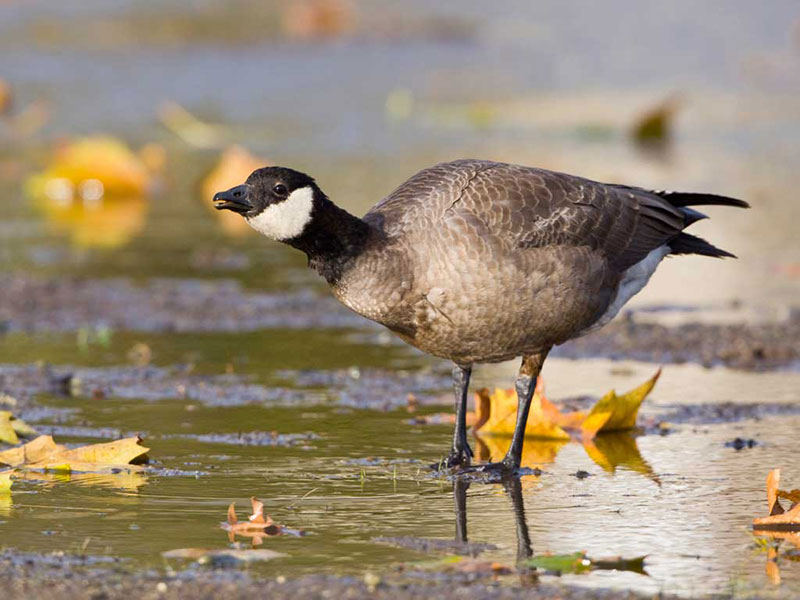
The Cackling Goose looks like a miniature Canada Goose. They can be dark or pale but always show the same plumage pattern as Canada Geese. The main way to recognize them is by their smaller size (like a large duck), and shorter, stubbier beak.
Brant
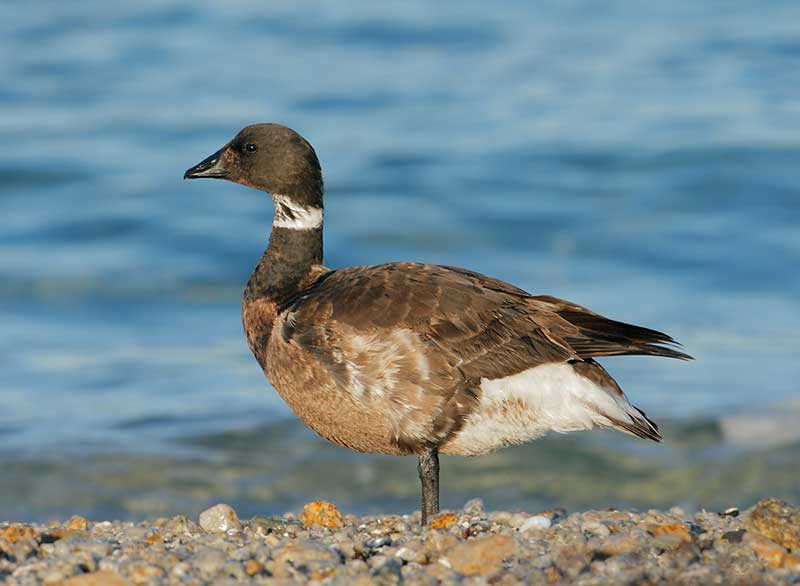
Like the Canada Goose, the Brant also has a black neck and head, and a large white undertail and lower belly. However, it is more black, gray, and white than gray-brown. Most of all, it lacks the white throat patch of the Canada Goose.
Greater White-fronted Goose
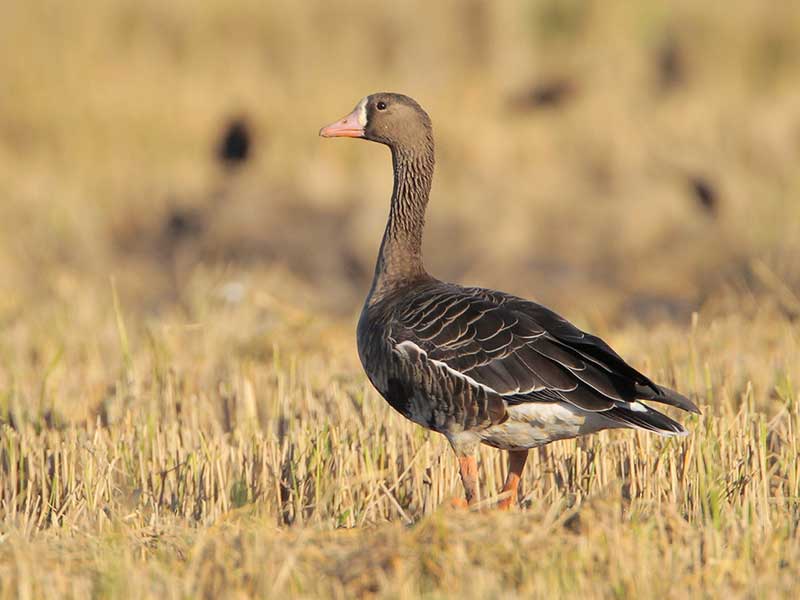
Greater White-fronted Geese sometimes flock with the Canada Goose. They have somewhat similar colors and can be easy to overlook. However, it always has an orange or pink beak, and orange or pink legs. The Greater White-fronted Goose also lacks the Canada’s black neck and white throat patch.
Frequently Asked Questions
What is the difference between a goose and a Canadian goose?
The difference between a goose and a Canadian goose is that the Canada Goose has a black neck and head with a white patch on its throat. The Canada Goose is also a wild bird whereas farmyard geese are a different, domesticated species.
Why is it called the Canadian goose?
It is called the “Canadian Goose” because, historically, much of its population lived in Canada. In present times, Canada still hosts a large population of the Canada Goose.
Where are Canada Geese found?
Canada Geese are found in wetlands and around lakes and rivers in much of North America.
What is unique about Canada Goose?
A unique thing about the Canada Goose is that it is the most common and successful goose species in North America.
Why are there so many Canadian Geese in the US?
There are so many Canadian Geese in the US because this species can live with people and has few predators. Parks, golf courses, and other places with big lawns and lakes are perfect habitat for the Canada Goose.

